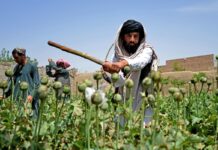Each year as Pakistan gears up for Eidul Azha, bustling cattle markets brim with sheep, goats, and cows brought from villages into cities. This cherished tradition of Qurbani— animal sacrifice— creates days of intense human-animal contact.
Alongside the festive preparations, experts warn of a silent menace: Crimean-Congo hemorrhagic fever (CCHF), commonly known as the Congo virus. CCHF is a severe viral hemorrhagic fever carried by Hyalomma ticks on livestock, and it is endemic in Pakistan. The World Health Organization notes that CCHF has a case fatality rate of up to 40 percent.
Eid-ul-Adha embodies faith, compassion and community— but it also amplifies risk for zoonotic diseases like CCHF. With seasonal conditions, animal movement, and festive slaughter aligning perfectly, the Congo virus exploits this window. By improving surveillance, investing in hospital preparedness, and educating both public and professionals, Pakistan can reduce the annual surge and protect lives— without compromising the spirit of Eid
The virus spreads through tick bites or contact with infected animal blood or tissues— especially during slaughter. Human-to-human transmission can also occur via contact with an infected person’s blood or body fluids, placing healthcare workers and family members at risk.
Symptoms begin suddenly— fever, headache, muscle pain and nausea— often progressing to rash and bleeding from the gums or under the skin. In severe cases, organ failure and death may occur by the second week. There is no approved vaccine for CCHF in humans or animals, and antivirals like ribavirin remain controversial in effectiveness.
Why Eid-ul-Adha Heightens the Risk
In Pakistan, CCHF cases spike during the summer and Eid-ul-Adha period. A study by local physicians found that 58–62 percent of annual cases occurred around Eid dates. Millions of livestock are moved from rural farms into urban areas, often carrying ticks in their thick coats. This, combined with prolonged human-animal contact and hot, tick-friendly weather, amplifies the threat. Data from Aga Khan University shows that over 40 percent of confirmed CCHF cases occurred between July to September— overlapping with Eid.
What Is CCHF and Where Does It Come From?
CCHF was first documented in Crimea (1944) and the Congo (1956) and is caused by a nairovirus in the Bunyaviridae family [1]. Livestock usually don’t show symptoms, but humans may develop severe hemorrhagic illness. Hyalomma ticks act as both reservoir and vector— able to transmit the virus for months after feeding on infected animals.
Those most at risk include farmers, butchers, and veterinarians, yet Eid brings non-professionals into close contact with blood and tissues. As one study observed: “The vast increase in animal slaughter during Eid-ul-Adha provides ample contact time between humans and animals for transmission of the virus”.
CCHF has been recorded in Pakistan since 1976, with outbreaks reported nearly every year. Between 2014 and 2020, 365 confirmed cases were reported, with a 25 percent fatality rate. Balochistan remains a hotbed due to its border with Afghanistan, where the virus is also endemic.
Recent Outbreaks in Pakistan
The 2023–2024 period witnessed a troubling rise. By late 2023, 112 cases were reported nationwide, many among healthcare workers—a clear sign of hospital-based transmission gaps. In Quetta, Fatima Jinnah Chest Hospital admitted 30 patients in 2024, with six fatalities. In response, the Balochistan government launched a fumigation drive and prepped blood supplies ahead of Eid 2025.
In May 2024, a 22-year-old animal trader from Khyber Pakhtunkhwa died of CCHF, weeks ahead of the usual seasonal rise. Punjab’s Attock district declared a “livestock emergency” after two deaths, banning local cattle markets and disinfecting pens. In short, recent cases were reported across at least four provinces— confirming Eidul Azha as the peak CCHF season.
Regional Comparisons
The Congo virus is not just a Pakistani concern. In Iraq, WHO-EMRO recorded 986 cases between 2021 and 2023, with a 17 percent case-fatality rate. 109 of those cases occurred just before Eidul Azha 2023. Iran, Turkey, and Afghanistan face similar seasonal surges. The Eastern Mediterranean Region (EMRO), which includes Pakistan, is among the most CCHF-affected globally—after Turkey and Iran.
Government and Public Health Response
In April 2025, the NIH issued an Eid advisory urging provinces to strengthen surveillance, stock PPE and raise awareness. Khyber Pakhtunkhwa set up isolation units and free PCR testing. In Islamabad, over 100 unauthorized cattle markets were shut, and animals relocated to regulated sites with veterinary presence.
Balochistan distributed gloves and masks to butchers and initiated disinfectant campaigns. Still, challenges remain: rural hospitals lack isolation wards and PPE, and training for health workers is inconsistent, exposing cracks in the national strategy.
Public Awareness and Preparedness
Despite government action, awareness is uneven. A 2018 report found that most buyers and sellers in cattle markets were unaware of the tick-borne nature of the disease. While some rural communities recognize CCHF, they often lack protective equipment or acaricides. Urban residents, focused on the sacrifice, seldom consider health risks. Even among medical staff, training gaps have led to hospital-based transmission.
Preventive Measures
Simple steps can significantly reduce the risk:
- Protective Clothing: Wear gloves, masks, long sleeves, and boots when handling animals.
- Tick Control: Inspect animals, especially ears and groin, and apply vet-approved acaricides.
- Sanitation: Clean slaughter sites and tools; dispose of offal and blood safely.
- Regulated Slaughter Sites: Use certified venues with veterinary checks and sanitation.
- Personal Hygiene: Wash thoroughly post-slaughter; seek medical help for symptoms within two weeks.
- Healthcare Safety: Ensure PPE use when treating suspected CCHF cases.
- Education Campaigns: Utilize media to inform the public each Eid season.
Eid-ul-Adha embodies faith, compassion and community— but it also amplifies risk for zoonotic diseases like CCHF. With seasonal conditions, animal movement, and festive slaughter aligning perfectly, the Congo virus exploits this window. By improving surveillance, investing in hospital preparedness, and educating both public and professionals, Pakistan can reduce the annual surge and protect lives— without compromising the spirit of Eid.






















